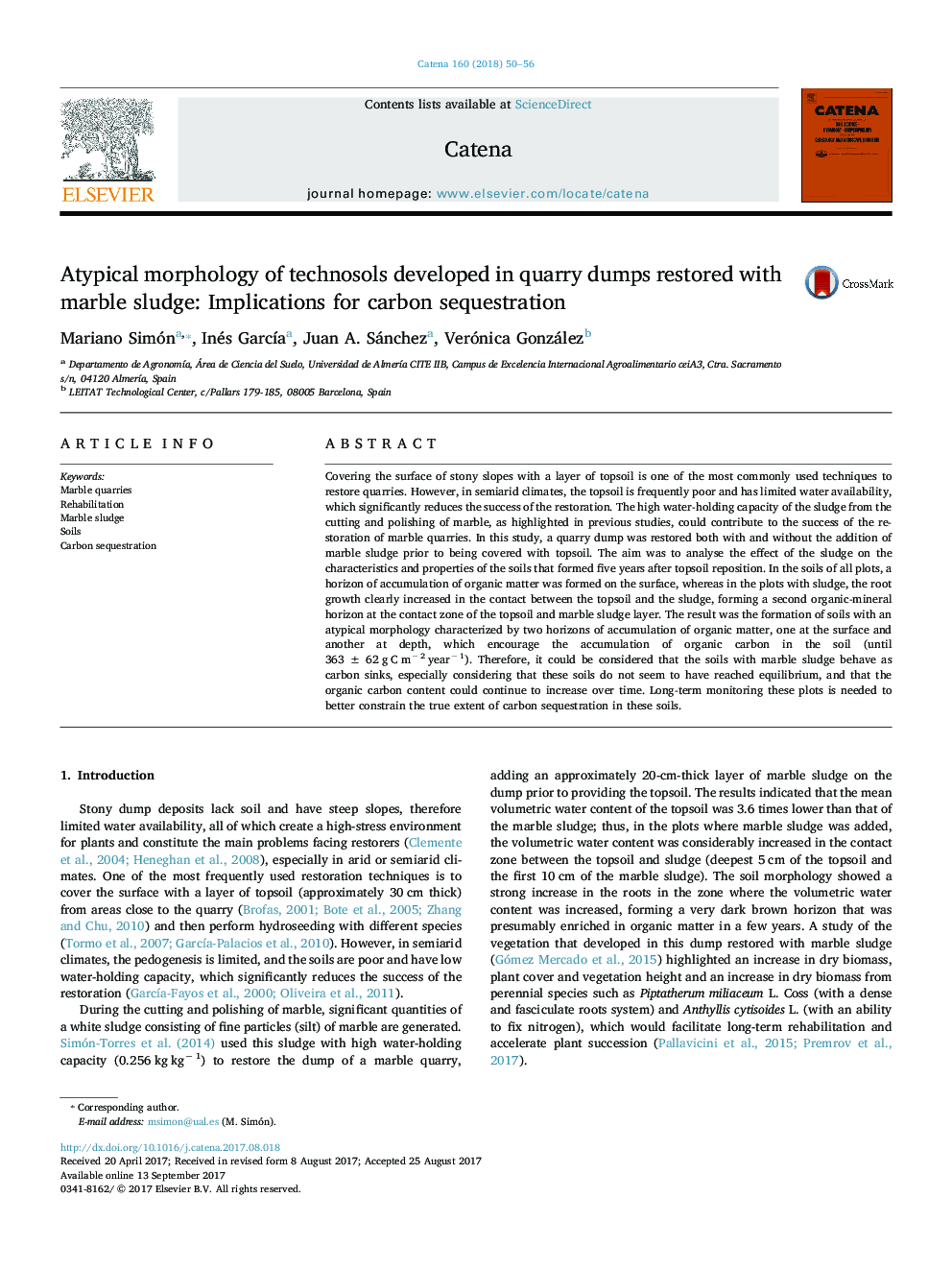| کد مقاله | کد نشریه | سال انتشار | مقاله انگلیسی | نسخه تمام متن |
|---|---|---|---|---|
| 5770025 | 1629194 | 2018 | 7 صفحه PDF | دانلود رایگان |
- Marble sludge is a beneficial resource for improving the restoration of marble quarries in semiarid environments.
- Its high water-holding capacity encourages root development and organic carbon accumulation.
- Placed in depth induces the formation of soils with two horizons of organic carbon accumulation.
- Marble sludge increases the organic carbon sequestration in semiarid environments.
Covering the surface of stony slopes with a layer of topsoil is one of the most commonly used techniques to restore quarries. However, in semiarid climates, the topsoil is frequently poor and has limited water availability, which significantly reduces the success of the restoration. The high water-holding capacity of the sludge from the cutting and polishing of marble, as highlighted in previous studies, could contribute to the success of the restoration of marble quarries. In this study, a quarry dump was restored both with and without the addition of marble sludge prior to being covered with topsoil. The aim was to analyse the effect of the sludge on the characteristics and properties of the soils that formed five years after topsoil reposition. In the soils of all plots, a horizon of accumulation of organic matter was formed on the surface, whereas in the plots with sludge, the root growth clearly increased in the contact between the topsoil and the sludge, forming a second organic-mineral horizon at the contact zone of the topsoil and marble sludge layer. The result was the formation of soils with an atypical morphology characterized by two horizons of accumulation of organic matter, one at the surface and another at depth, which encourage the accumulation of organic carbon in the soil (until 363 ± 62 g C mâ 2 yearâ 1). Therefore, it could be considered that the soils with marble sludge behave as carbon sinks, especially considering that these soils do not seem to have reached equilibrium, and that the organic carbon content could continue to increase over time. Long-term monitoring these plots is needed to better constrain the true extent of carbon sequestration in these soils.
Journal: CATENA - Volume 160, January 2018, Pages 50-56
